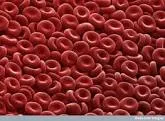
History of Blood Transfusions :
Long before the phenomenon of blood antigen-antibody interaction was discovered, surgeons experimented with human transfusions in an attempt to save the lives of patients who were dying from severe blood loss and the resulting shock. The first attempt may have been an English physician during the mid-17th century who infused a wounded soldier with sheep blood. Not surprisingly, the soldier suffered a painful death. The first successful transfusion of human blood to another human was done by a British doctor in 1818 in order to save the life of a woman who was hemorrhaging following childbirth. By the mid 19th century, European and American doctors used transfusions in a last ditch attempt to save soldiers and other patients with horrendous wounds. They usually transferred blood directly from a healthy individual to their patient via a rubber tube with hypodermic needles at each end. This occasionally resulted in success but more often than not killed the recipient. The results seemed to be random. Doctors in the 19th century also experimented with a variety of blood substitutes, including milk, water, and even oils.
It was the discovery of the ABO click this icon to hear the preceding term pronounced blood types in 1900 that finally led us to understand how to consistently use transfusions to save lives. Even with this knowledge, however, life threatening reactions still occur in about 1 out of 80,000 transfusions in developed nations. The ABO blood group and its central role in transfusion failures are described in the next section of this tutorial.
White Cell Antibodies :
The blood type antigen-antibody interaction is one of many similar recognition-rejection phenomena in our bodies. Infectious microorganisms, such as viruses, also carry foreign antigens which stimulate the production of white cell antibodies (lymphocytes) that attack the antigens by binding to them as a way of getting rid of the invading parasites. Once stem cells in our bone marrow produce antibodies to identify a specific alien antigen, we have the ability to produce them more quickly and in larger numbers. This results in the development of a long-term active immunity to future invasions of the same kind of alien antigen. This is the key to successful vaccination for viruses and some other microorganisms that invade our bodies.